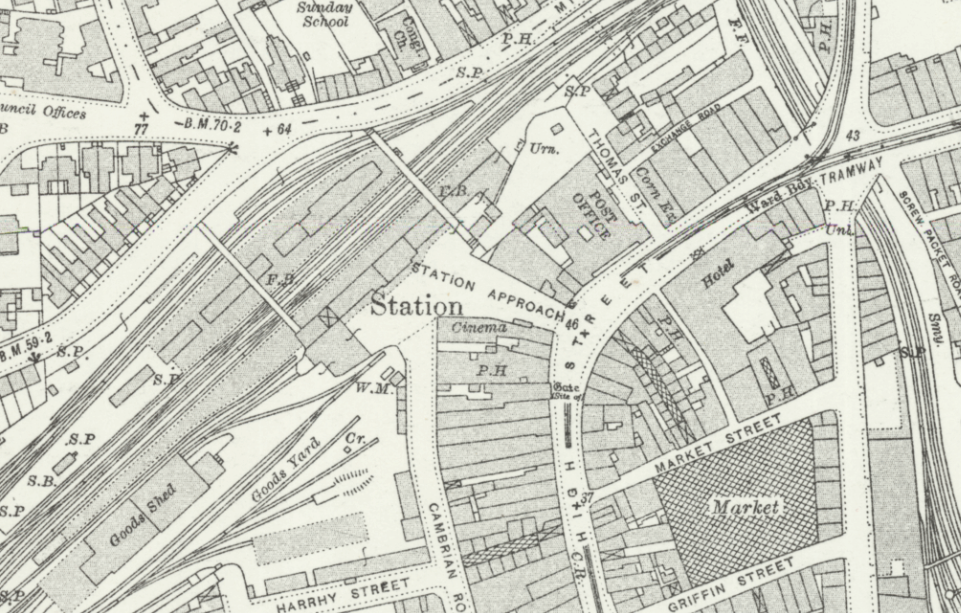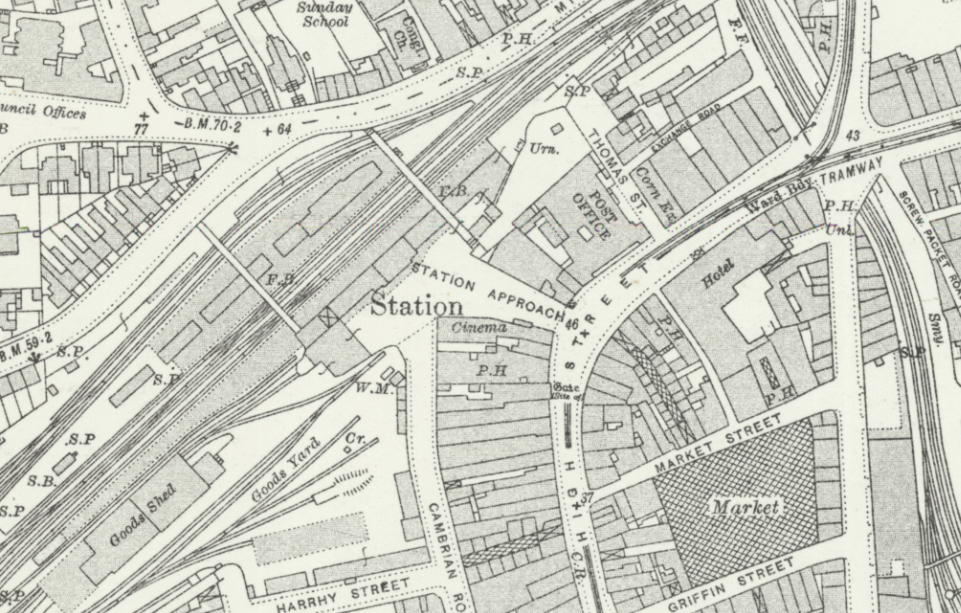Whilst digging through the South Wales Argus' archives looking for interesting articles one small piece tucked away in the regular Seen and Heard (By "Argus") column in 1901 mentioned an annual tradition undertaken by GWR in order to protect their right of ownership.
This led me to research more into Station Approach and how it developed as it became more popular. As with most newspaper archives there are lots of details involved so what’s included here is just a snippet.
"In accordance with the annual practice, a rope was drawn across the entrance to Station Approach, High Street, Newport, on Good Friday, and every vehicle was challenged before it could pass. As most people know, the Station Approach is the property of the Great Western Railway Company, and this is the means they take to prevent any public right being set up."
— South Wales Argus, Saturday 6th April, 1901
This tradition was still continuing in 1910 when it's mentioned in the same column.
"In accordance with their annual custom, the Great Western Railway Company erected a rope barrier at the entrance to the Station Approach at Newport on Good Friday to establish their claim to it as private property, and every vehicle which entered did so by courtesy and not by right, and only on business at the station."
— South Wales Argus, Saturday 26th March, 1910

This is a long established rule in which if members of the public have unchallenged use of a path for a period of 20 years of more they can apply to have it converted into an official Public Right of Way.
Changes to Station Approach
There appears to have been ongoing discussions about the need for an improvement of the station approach for some years and a letter written by an ‘Old Resident’ in 1913 wasn’t too happy with proposals laid out at the time.
To ask the burgesses to expend any sum approaching £40,000 for the equivalent of a bit of road hitherto repaired and repairable by the company (which, practically leading to nowhere but the railway premises is of no use to anyone but the railway authorities), is well, to say the least of it a very very one-sided bargain.
Interestingly, the author mentions the Murenger House in his letter.
A commencement seems natural and necessary with Murenger House. The front of this venerable building might be left unchallenged on pillars, with the ship front removed back to the line of the other business premises, and the whole of the front of the Cinema might be curbed away with a new entrance to it from the Approach itself, and a pavement carried along the blank wall to Cambrian Road.
Actual change started to appear in 1922. A detailed article (subscription required) discusses the leasehold of 56 High Street which needed to be purchased to aid with the improvements. The article highlighted the type of problem experienced.
On a busy Saturday a 29 foot road leading from the station was altogether inadequate for a place like Newport. Many people came down from the Valleys, and the roadway was congested with pedestrians and vehicles, and it was in the interested of public safety to have a footpath on each side of the roadway.
GWR appeared content with an expenditure that would improve the station but entering into a partnership with the Corporation to split costs was a sticking point.
In view of the huge expenditure the Railway Company had already decided upon to lay out in improving the station for their business, profit, and convenience, the question was whether they would not also spend more money to make the approach worthy of the new station.
Major I.C. Vincent of the council said he would vote in favour of the redevelopment scheme provided the new approach “could be used by anyone, whether with a vehicle or not, in any way or at any time”.
Ultimately, the drafted resolution on November 21, 1922, for the redevelopment was carried by 27 votes to one against and one neutral.
Further Reading
By May 1924, more improvements were required and an article in the South Wales Weekly Argus (subscription required) including details on owners of the buildings involved, dimensions of the roads and discussions on how to reduce the frontage of the Murenger House to make it more in line with the neighbouring Tredegar Arms








Member discussion